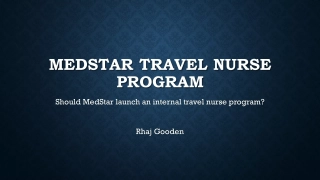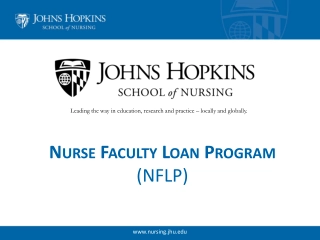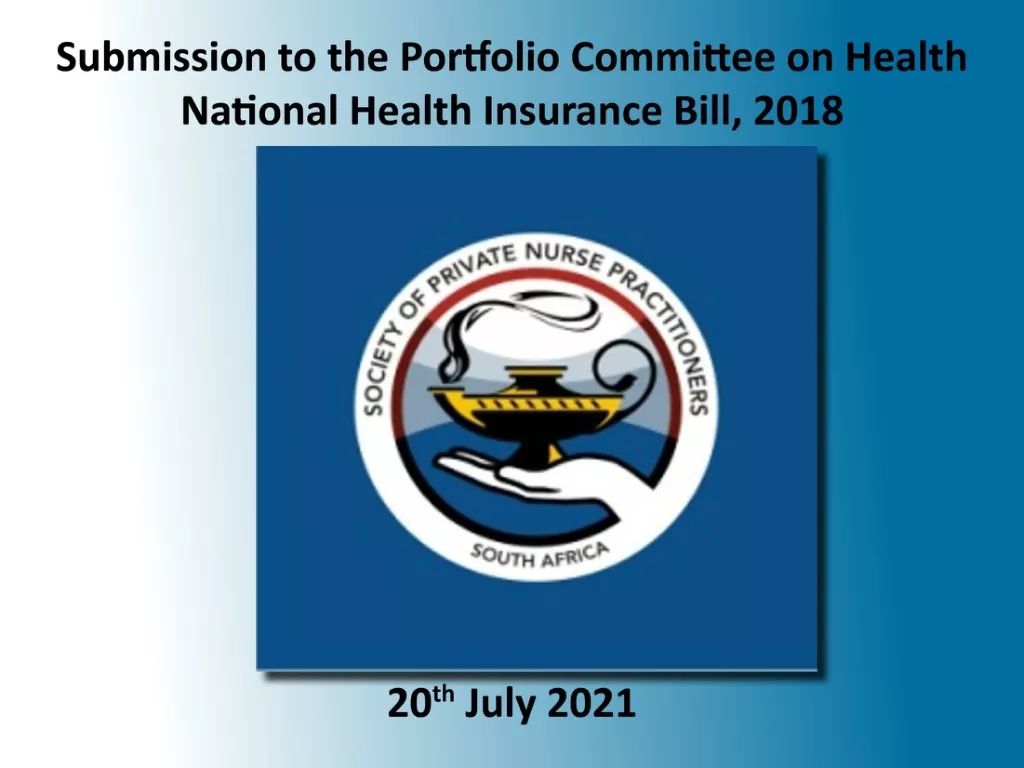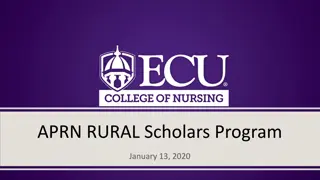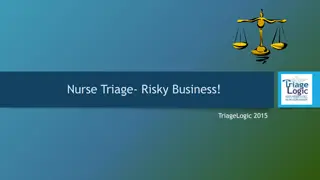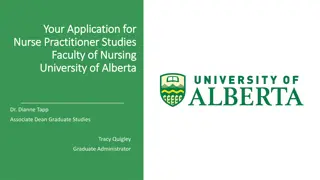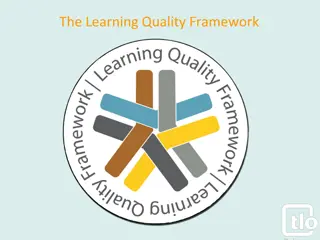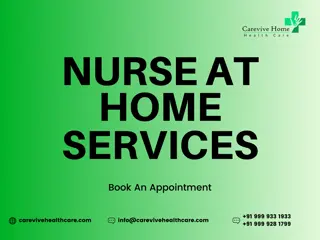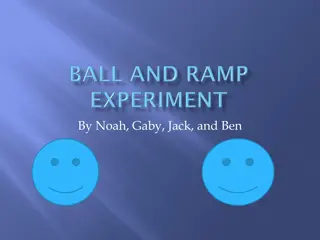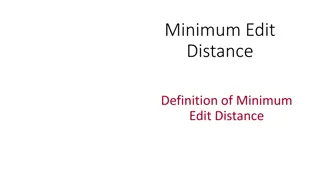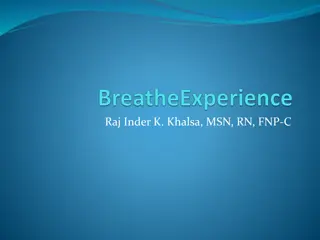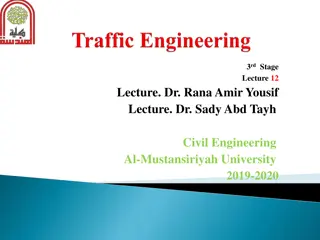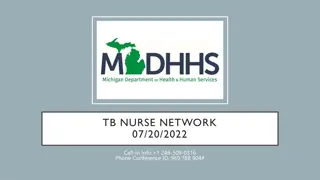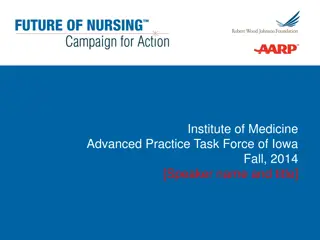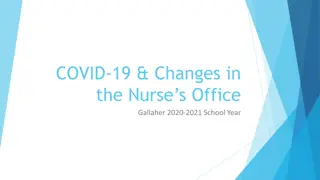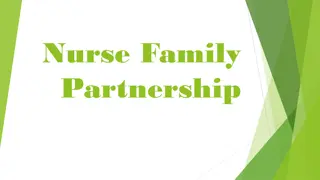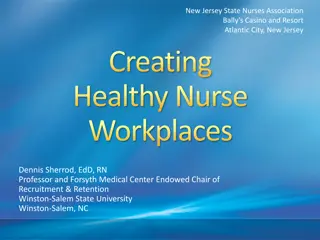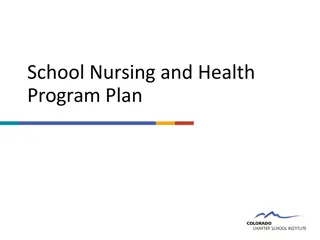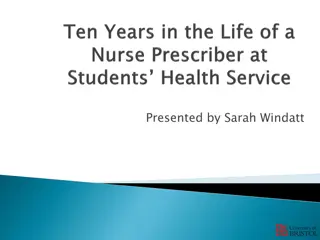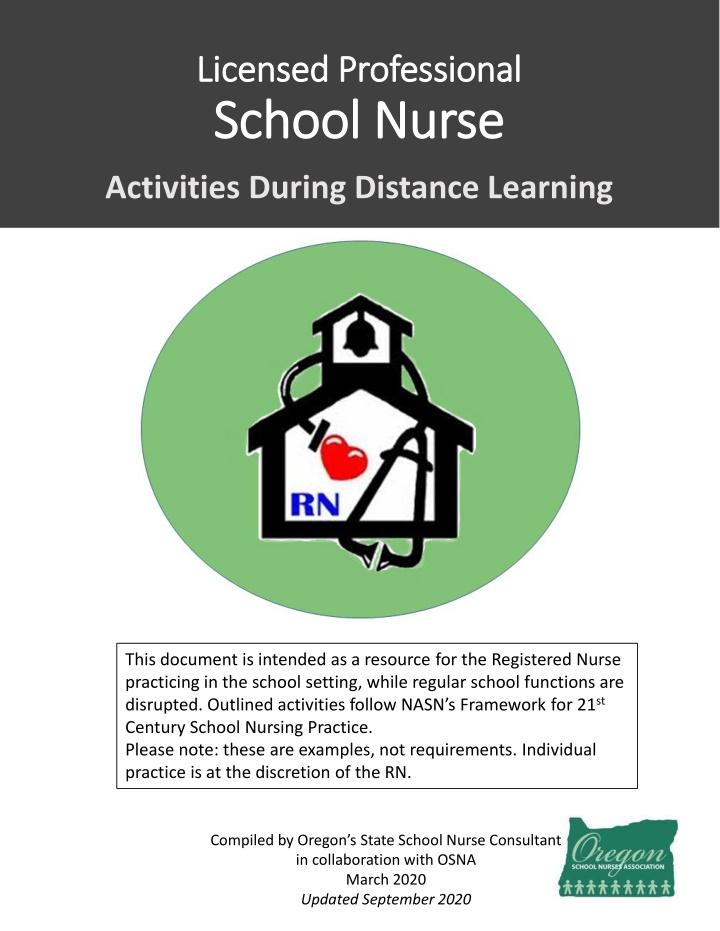
School Nursing Practice Activities for Distance Learning
Explore the outlined activities for school nurses during distance learning disruptions, focusing on risk reduction, health screening, health education, equity, cultural agility, and care coordination. Stay informed and prepared to provide essential support to the school community.
Download Presentation

Please find below an Image/Link to download the presentation.
The content on the website is provided AS IS for your information and personal use only. It may not be sold, licensed, or shared on other websites without obtaining consent from the author. If you encounter any issues during the download, it is possible that the publisher has removed the file from their server.
You are allowed to download the files provided on this website for personal or commercial use, subject to the condition that they are used lawfully. All files are the property of their respective owners.
The content on the website is provided AS IS for your information and personal use only. It may not be sold, licensed, or shared on other websites without obtaining consent from the author.
E N D
Presentation Transcript
Licensed Professional Licensed Professional School Nurse School Nurse Activities During Distance Learning This document is intended as a resource for the Registered Nurse practicing in the school setting, while regular school functions are disrupted. Outlined activities follow NASN s Framework for 21st Century School Nursing Practice. Please note: these are examples, not requirements. Individual practice is at the discretion of the RN. Compiled by Oregon s State School Nurse Consultant in collaboration with OSNA March 2020 Updated September 2020
NASNs Framework for 21 NASN s Framework for 21st st Century School Nursing Practice School Nursing Practice Century
Community / Community / Public Health Public Health Risk reduction Advocate for evidence-based practices aligned with local public health recommendations. [CDC; OHA video; ODE Ready Schools Safe Learners (RSSL) guidance] Screening SYMPTOMS screening: Update illness screening practices for your site(s) per public health recommendations consider symptoms of concern, length of exclusion [Oregon Division 19 reporting; CDC symptoms of concern; RSSL Planning for COVID-19 Scenarios; OHA/ODE Communicable Disease Guidance for Schools] HEALTH screening: guidance for Oregon screenings such as vision, dental, and hearing is under review as of September 2020 Health education Seek health information from reliable sources [CDC, WHO, NIH, OHA Fact Sheet prevention flyer] Tailor messages to the ages and needs of your school community [CDC HealtheCards; Health Messaging & Age Considerations (Bell, 2016)] Share through available means; consider visiting online classes with teacher permission, or posting to school website or approved social media Health Equity Anticipate that current events will have disproportionate impact on certain individuals/groups in your community. [CDC FAQ; NIH article; OSNA Social Determinants and Acuity Strategies] Participate in school outreach; identify resources for your community (food, social supports) and share information. [211 statewide resource line] Cultural agility Protect against stigma; avoid and correct language that targets racial/cultural groups. [CDC reducing stigma; OHA Know the Facts video] RN services do depend on context. Decisions about individual practice should be made considering applicable law, personal circumstances and work site specifics.
Care Coordination Care Coordination Chronic condition management Review/update training materials; provide trainings, teaching for anticipated emergencies; delegate care to staff for current or planned onsite needs; consider keeping care provision within cohorts. [OHA Interim Guidance for Lifesaving Treatment Protocols] If applicable, provide nursing services remotely or onsite [ODE School Nurse Telehealth FAQs; ODE Specialized Clinical Procedures; pre-K/childcare ELD resources] Consider care hand-offs, such as whether school medications would be sent home if school closes or student quarantines. Collaborative communication Stay connected with members of the school staff, and with families and care providers if appropriate Consider FERPA as well as personal privacy, especially if communicating via personal devices [OSBN Telehealth Nursing interpretive statement; District processes; *67 prior to calling; TextNow app] Interdisciplinary teams Stay connected with counselors, teachers, other staff Outreach to share information and support accurate health information, links to services, positive messages Student care plans Review/modify care plans for students out of school Consider care plans for emergency child care; modifications or accommodations appropriate to home learning; additional PPE or other adjustments to care in the school setting [RSSL Specialized Clinical Procedures] RN services do depend on context. Decisions about individual practice should be made considering applicable law, personal circumstances and work site specifics.
Leadership Leadership Lifelong learner Stay current on the emerging information [CDC; OSNA COVID- 19 Resources] Pursue accredited continuing nursing education (CNE) hours and other learning opportunities [NASN eLearning; Workshops and Conferences from OSNA] Advocacy Advocate for appropriate use of your time as a nurse [Oregon School Nurse Manual; NASN advocacy skills; NASN School nurse role] Advocate for students / groups at higher risk from change in routine, from underlying health conditions, and from racism or stigma [Social Determinants of Health; CDC reducing stigma] Collaborate and plan actions to address unmet needs Policy Development Pursue education (CNE) to increase your capacity for health policy review and development [NASN eLearning] Use emerging data to inform updates to health protocols and policies in your school community Technology Share knowledge or learn about technology to ensure continued service provision & health education Use strategies to protect health information [NASN privacy] RN services do depend on context. Decisions about individual practice should be made considering applicable law, personal circumstances and work site specifics.
Quality Improvement Quality Improvement Data collection Consider data available about current student needs and nursing services provided; plan for changes to data collection to ensure needs are met Review med sheets, other available data about health service provision; identify gaps or opportunities to improve [NASN data points ] Collaborate with applicable school staff to align school health data collected, symptoms of illness etc. aligns with Ready Schools requirements [OSNA COVID-19 Toolkit] Documentation Document your activities whether onsite or remote Update school health records care notes, screenings, immunizations, alerts Consider updating SNAP/Synergy/PowerSchool notes and charting options for improved flow Review student info forms, compile problems/allergies lists; ensure records are up to date Prepare for end-of-year acuity reports [ODE 2020 Medical Acuity reporting guidelines; OSNA Social Determinants and Acuity Strategies] Evaluation Prepare feedback regarding personal and collaborative efforts Consider student health supports and outcomes Consider challenges and opportunities related to current events systems, policies, tools needed RN services do depend on context. Decisions about individual practice should be made considering applicable law, personal circumstances and work site specifics.
Standards of Practice Standards of Practice Know your Nurse Practice Act, scope and legal requirements [OSBN Nurse Practice Act] Recognize opportunities and challenges [OSNA resources; OSBN crisis nursing FAQs] Providing safe care Demonstrating competency in your area of practice Developing and implementing care plans Providing health education Developing and implementing health policy Can you practice to the full extent of your license? if not document challenges and address if possible Can you practice within your scope? if not document challenges and address if possible Know your Standards of Practice [NASN Standards] Recognize opportunities and challenges Review ANA/NASN Scope and Standards for School Nursing Practice; 18 standards and related competencies Standards 1-6, nursing process; standards of practice Standards 7-18, standards of professional performance Can you fulfill the competencies related to your standards of practice? if not document challenges and address if possible RN services do depend on context. Decisions about individual practice should be made considering applicable law, personal circumstances and work site specifics.

